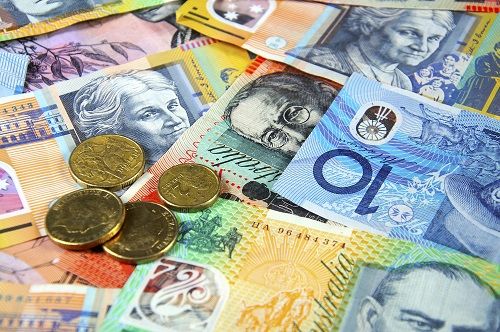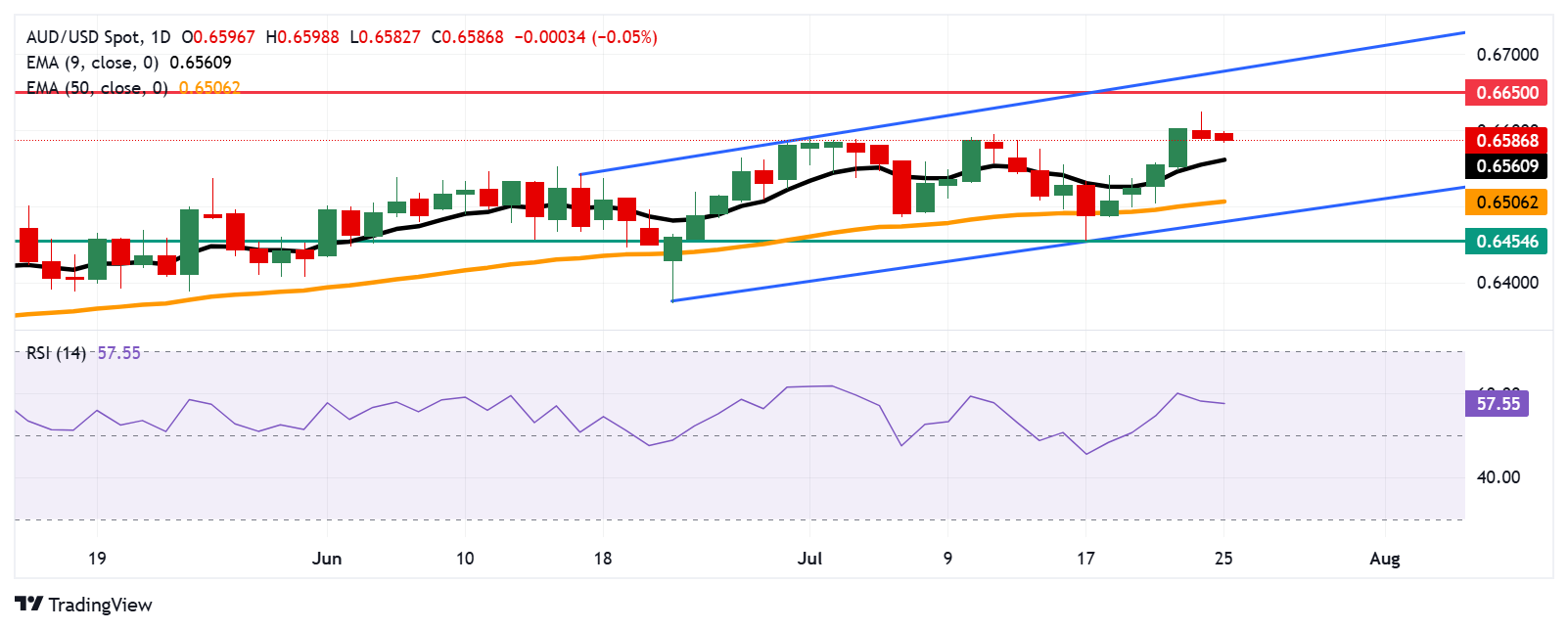
The Australian Dollar pulled back from an eight-month high of 0.6625 reached on Thursday.
Traders watch for US Treasury Secretary Scott Bessent’s upcoming meeting with Chinese officials in Stockholm next week.
RBA’s Bullock highlighted her commitment to keep inflation low and stable moving forward.
The Australian Dollar (AUD) declines against the US Dollar (USD) on Friday, extending its losses for the second consecutive day. The AUD/USD pair continues to lose ground after pulling back from an eight-month high of 0.6625, which was reached on Thursday.
Traders monitor developments in the United States (US) trade talks with key partners, including China, Australia’s largest trading partner. US Treasury Secretary Scott Bessent announced earlier this week that American and Chinese officials will meet in Stockholm next week for a third round of high-level talks.
Reserve Bank of Australia (RBA) Governor Michele Bullock, speaking at the Anika Foundation event in Sydney, emphasized her commitment to ensuring that inflation stays low and stable moving forward. Bullock also noted ongoing uncertainty in the global economy.
Australian Dollar loses ground as US Dollar advances ahead of manufacturing data
The US Dollar Index (DXY), which measures the value of the US Dollar against six major currencies, is extending its gains for the second successive session and trading around 97.60 at the time of writing. US Durable Goods Orders for June will be eyed later in the day.
US Treasury Secretary Scott Bessent said late Thursday that a nominee for the next Federal Reserve Chair is likely to be announced in December or January. Bessent emphasized that there is “no rush” to select a successor to current Fed Chair Jerome Powell, noting that the nominee could come from current board members or the heads of the district banks, according to Bloomberg.
The Financial Times reported on Wednesday that the European Union (EU) and the United States (US) are closing in on a deal that would impose 15% tariffs on EU goods imported into the US.
President Trump announced a trade deal with Japan that includes a 15% tariff on Japanese exports to the US. As part of the agreement, Japan will invest $550 billion in the US and open its markets to key American products.
President Trump said during a meeting with the Philippine President Bongbong Marcos on Tuesday that “I think we will get a trade deal; we're close to a trade deal.” I don't mind if the Philippines gets along with China, he added.
Fed Governor Adriana Kugler said that the US central bank should not lower interest rates "for some time" since the effects of the Trump administration's tariffs are starting to show up in consumer prices. Kugler added that restrictive monetary policy is essential to keep inflationary psychology in line.
San Francisco Fed President Mary Daly said last week that expecting two rate cuts this year is a "reasonable" outlook, while warning against waiting too long. Daly added that rates would eventually settle at 3% or higher, exceeding the pre-pandemic neutral rate.
Fed Governor Christopher Waller believes that the US central bank should reduce its interest rate target at the July meeting, citing mounting economic risks. Waller added that delaying cuts runs the risk of needing more aggressive action later.
Judo Bank and S&P Global showed that Australia’s Composite PMI rose to 53.6 in July, versus 51.6 prior, reaching the highest level since April 2022 and marking the tenth consecutive month of expansion. Services PMI climbed to 53.8 in July from the previous reading of 51.8, reaching its fastest pace in 16 months. Meanwhile, the Manufacturing PMI came in at 51.6 in July versus 50.6 prior. New orders for manufactured goods rebounded, driving the strongest overall growth in new business in more than three years.
The latest Reserve Bank of Australia (RBA) Meeting Minutes indicated that the board agreed further rate cuts were warranted over time, with attention centered on the timing and extent of easing. The majority believed it was best to await confirmation of an inflation slowdown before easing. Most members felt cutting rates three times in four meetings would not be "cautious and gradual.”
Westpac reports that its Leading Index continues to reflect weakening momentum. The six-month annualised growth rate in the Westpac-Melbourne Institute Leading Index eased to 0.03% in June, down from 0.11% in May. The slowdown is primarily driven by softer commodity prices, waning sentiment, and reduced hours worked.
Australian Dollar falls below 0.6600 toward nine-day EMA support
AUD/USD is trading around 0.6590 on Friday. The daily chart’s technical analysis suggests a persistent bullish bias as the pair moves upwards within the ascending channel pattern. The 14-day Relative Strength Index (RSI) is positioned above the 50 mark, suggesting a bullish bias is active. Additionally, the pair remains above the nine-day Exponential Moving Average (EMA), indicating that short-term price momentum is still intact.
The AUD/USD pair may target the initial barrier at the psychological level of 0.6650, followed by the ascending channel’s upper boundary around 0.6680.
On the downside, the AUD/USD pair could find its primary support at the nine-day EMA at 0.6561. A break below this level could weaken the short-term price momentum and prompt the pair to test the 50-day EMA of 0.6506, followed by the ascending channel’s lower boundary around 0.6480.
AUD/USD: Daily Chart

Australian Dollar PRICE Today
The table below shows the percentage change of Australian Dollar (AUD) against listed major currencies today. Australian Dollar was the weakest against the US Dollar.

The heat map shows percentage changes of major currencies against each other. The base currency is picked from the left column, while the quote currency is picked from the top row. For example, if you pick the Australian Dollar from the left column and move along the horizontal line to the US Dollar, the percentage change displayed in the box will represent AUD (base)/USD (quote).
* The content presented above, whether from a third party or not, is considered as general advice only. This article should not be construed as containing investment advice, investment recommendations, an offer of or solicitation for any transactions in financial instruments.

